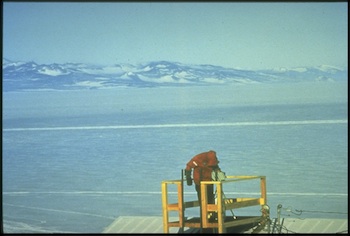A .gov website belongs to an official government organization in the United States.
A lock () or https:// means you've safely connected to the .gov website. Share sensitive information only on official, secure websites.
10 September 2014

Since the discovery that Earth's ozone layer was threatened, scientists from NOAA and the Cooperative Institute for Research in Environmental Sciences (CIRES) at the University of Colorado Boulder have made major contributions to our understanding of the stratospheric ozone layer and to the state-of-the-science assessments released every few years since 1988. Those contributions have been in the form of ongoing world-class research, support for the production of the assessment, and in leadership in communicating information about the ozone layer and ozone-depleting substances to the public and to policy-makers.
Since the 1980s, NOAA scientists have played a leading role in preparing the scientific assessments on ozone depletion required by the Montreal Protocol (1988, 1991, 1994, 1998, 2002, 2006, 2010, and 2014). A.R. Ravishankara, former Director of NOAA's Chemical Sciences Division (CSD), is now one of four international co-chairs of the Montreal Protocol's Scientific Assessment Panel. CSD scientist Christine Ennis has served as the report's Coordinator and Scientific/Technical Editor since 1994. Other NOAA and CIRES scientists serve as coauthors, review editors, and reviewers and contributed findings that were critical to the report.

When scientists first suggested that chlorofluorocarbons (CFCs) were depleting the ozone layer, NOAA led studies that elucidated the processes involved in global ozone depletion and determined the cause of the Antarctic ozone hole. NOAA scientists also monitor ozone levels, the state of the ozone layer, and they track, weekly, the concentration of ozone-depleting substances in the atmosphere. They also model the past and projected future state of the ozone layer, evaluate the ozone-depletion and global-warming potentials of chemicals being considered for widespread use, and examine the link between ozone layer recovery and climate change.
Scientists from NOAA, CIRES, and other cooperative institutes in the following groups have made major contributions to stratospheric ozone assessments and research: